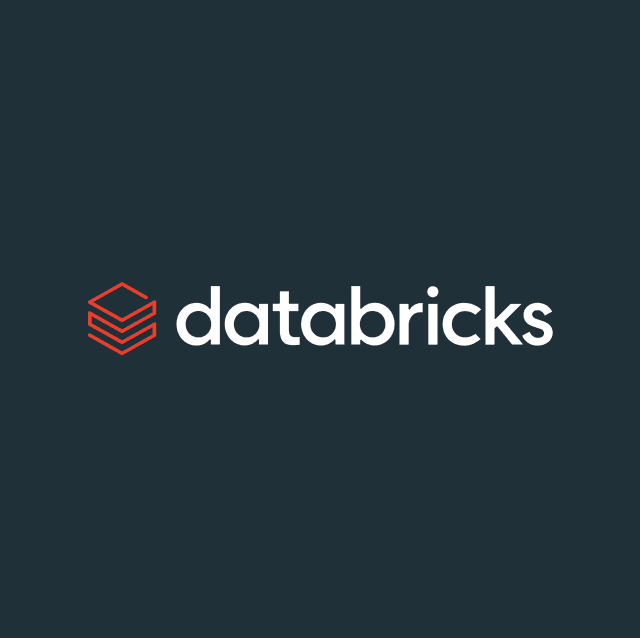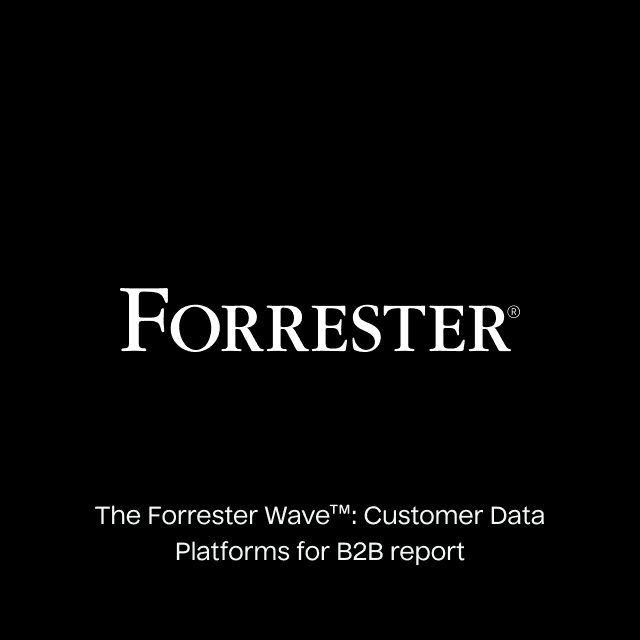If you’re looking for an identity resolution platform to build unified customer profiles, then there’s a good chance you’ve stumbled across Amperity. The platform has become pretty synonymous with the term “identity resolution” in the martech world. However, they’ve expanded from just identity resolution to offering a full Customer Data Platform (CDP).
In this blog post, you’ll learn everything there is to know about Amperity, including:
- What is Amperity CDP?
- Core products and capabilities
- Key features like data collection, storage, modeling, and audience management
- Real-time capabilities
- Reverse ETL
- Security
- Pros and Cons
What is Amperity CDP?
Amperity is a traditional CDP that specializes in identity resolution and marketing activation. The platform helps you merge and deduplicate known and anonymous user profiles using patented technology so you can better understand your customers and create unified profiles. The marketing language on the website even defines it as “The AI-powered CDP built for identity and action.”
Since the company's inception in 2016, Amperity has amassed many patents related to their identity resolution offering. While the platform meets many requirements on what it means to be a “CDP” outside of identity resolution, most of the features are still underdeveloped.
Amperity Quick Guide
Don’t have time to read our blog post? Download this one-pager on Amperity for the key information.


Core Products and Capabilities
Amperity operates very similar to many other traditional CDPs available on the market today, like Segment, ActionIQ, and mParticle, but the platform is a lot more tailored toward data engineers looking for identity resolution tools. As such, Amperity has four core product offerings:
- AmpID is the identity resolution algorithm that Amperity uses to stitch your user-completed events into a unified identity graph.
- Amp360 is the solution that Amperity offers to help you store, manage, and transform all of your contextual customer data into databases to support your marketing use cases.
- AmpIQ is Amperity’s solution to marketing activation. This feature lets you build and sync audiences directly to downstream operational tools.
- DataGrid is the underlying infrastructure that powers the entire Amperity platform from collection, processing, storage, and activation.
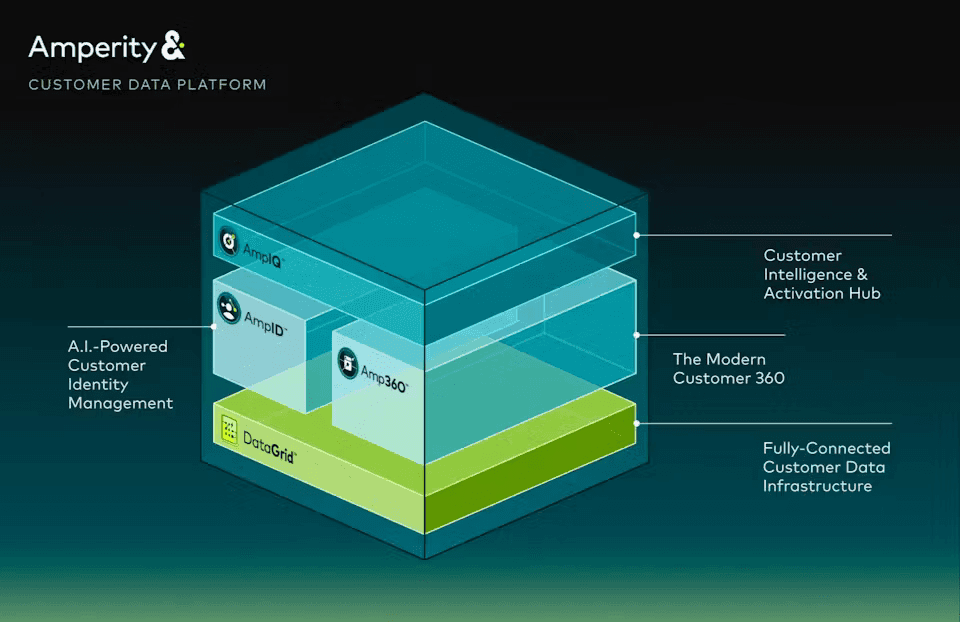
Every feature that Amperity offers is tightly coupled into the Amperity platform, which ultimately means the platform acts as an independent system, contrary to your existing data infrastructure. Another important factor to note is that pricing is based on the number of user profiles you’re managing on the platform, which can add up very quickly.
Data Collection
Like most other enterprise CDPs, Amperity connects to a wide variety of data sources to ingest data into the platform. The company also offers standard software deployment kits (SDKs) that you can implement across your websites, mobile apps, and servers to capture behavioral data about your users to understand how they’re engaging with your brand.
To actually ingest data into Amperity, you have to set up a data feed. Data feeds determine the schema structure of your data, which defines how it should be loaded into a specific domain table within Amperity. When ingesting data into Amperity, you have to apply specific semantic tags to each data field. These semantic tags are critical for helping Amperity run identity resolution algorithms even when data sources have different schemas, naming conventions, and data quality. The downside to this approach is you have to configure these tags for each one of your sources, and depending on the amount of data you’re looking to ingest, this can be quite time-consuming, and you have to repeat this process for every source; otherwise, the identity resolution won’t work.
Data Storage
Much like every traditional CDP offering available on the market today, all of your data is stored in Amperity’s managed infrastructure. Inevitably, this means you’re restricted to the data retention policies outlined in your contract with Amperity (note: this information is not currently publicly available). For many CDPs, this tends to be around 2-3 years, so for long-term historical data, you're at risk of losing it eventually.
Another problem with this architecture is that you inevitably create two sources of truth and pay for duplicate data storage: one in your data warehouse and another in your CDP. In contrast, with a Composable CDP, you can leverage your existing data storage, meaning you own your customer data indefinitely and are not dependent on a third-party system.
Data Modeling
Compared to other traditional CDPs on the market, Amperity actually provides quite a lot of flexibility for modeling and transforming your data before it’s ingested and after. However, bear in mind that your data structure has to conform to the constraints outlined within Amperity CDP.
Schema Management
Amperity’s schema is more flexible than other traditional CDPs but is still not nearly as flexible as a Composable CDP. All data ingested into Amperity must fit within one of the four table structures:
- Customer records: attributes and demographics about your customers/users
- Interaction records: specific behavioral events about your users
- Stitch results: an AmpID associated with a group of records representing a single user
- AmpIQ: tables built on data from other tables to help you build predictions and traits about your users
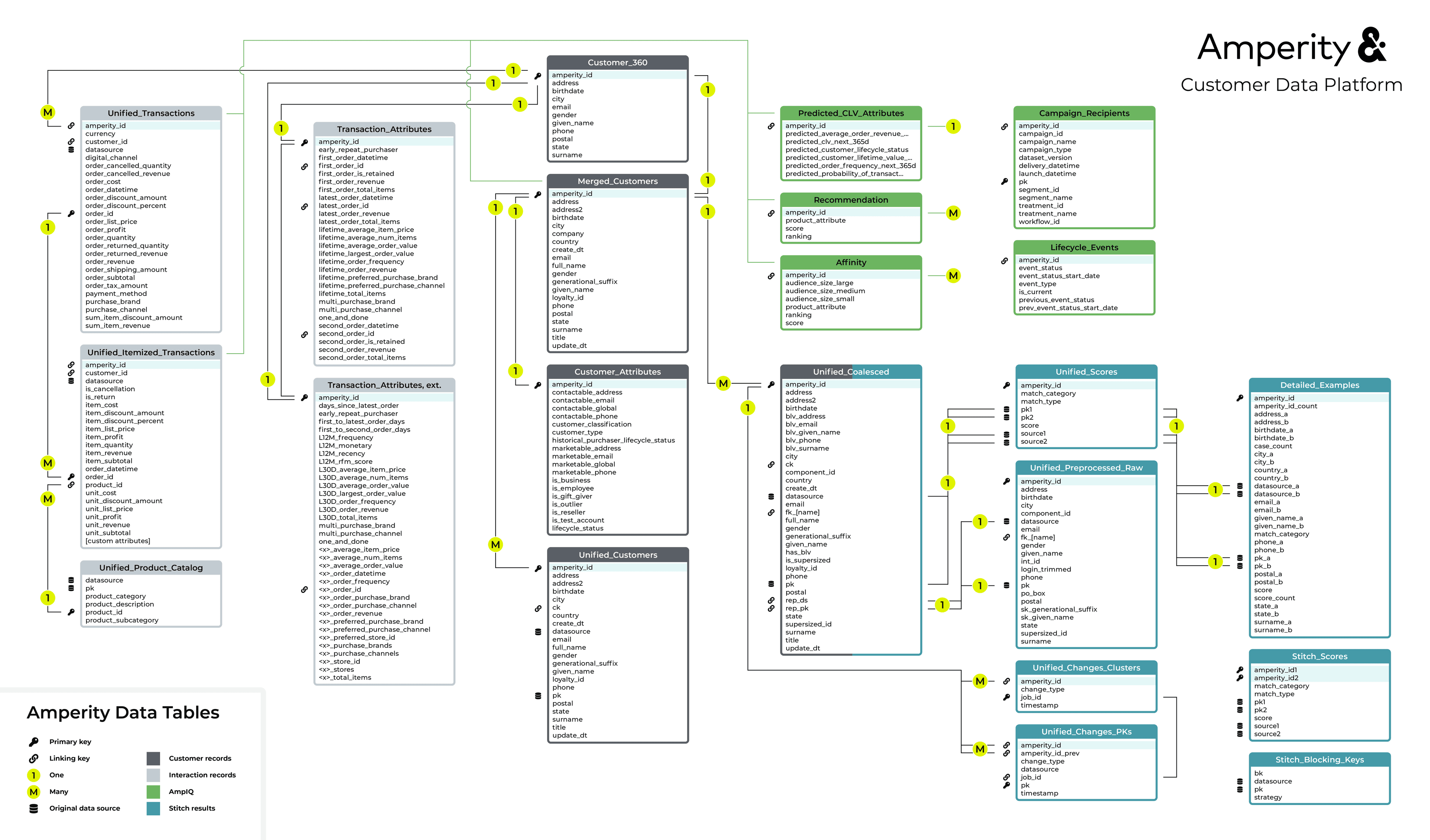
The only way to interact and update these tables is via SQL, so the platform is not exactly marketer-friendly. Any data that is unique to your business that doesn’t fit under one of these table structures has to be stored in a custom table, which introduces an entirely new set of engineering challenges.
With a Composable CDP, you don’t have to conform your data to another platform’s schema. You can leverage your existing schema structure and build audiences for activation directly from your data warehouse.
Identity Resolution
Identity resolution is by far the strongest capability that Amperity offers. The underpinning of this process is the AmpID. This is the patented identifier that Amperity uses to globally identify your users within their platform. A single AmpID represents a single user, and all AmpIDs are reassessed daily to maintain a consistent and comprehensive view of your customers and their associated records.
Amperity uses a combination of both probabilistic and deterministic matching to achieve the best results, all of which is powered by 45 different identity resolution algorithms under the hood. You can view all of your identity resolution jobs directly in the Stitch view within Amperity. Stitch is the framework that powers the AmpID to create connections between profiles. As your data is ingested into Amperity, Stitch processes it automatically from the domain table it was stored in and maintains and updates your records for each new individual.
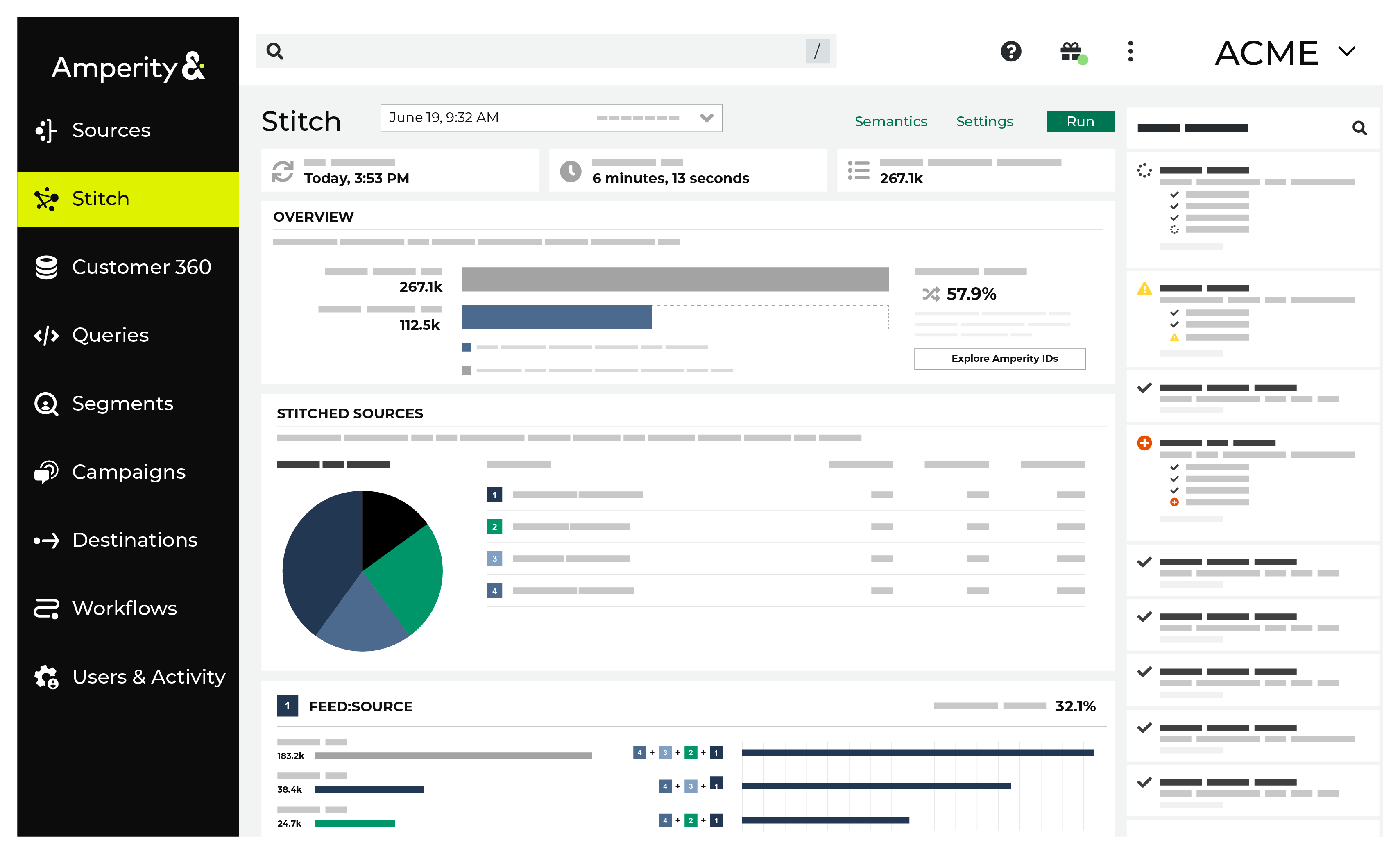
Audience Management
Within Amperity, you can use AmpIQ to build audience cohorts based on traits you define from the databases and tables you’ve created within the platform. This feature provides a no-code UI, allowing you to segment users via drop-downs and picklists. Once this segment has been computed, you can leverage it to power your campaigns and sync that data to your desired destination. You can group audiences underneath campaigns to measure and track performance.
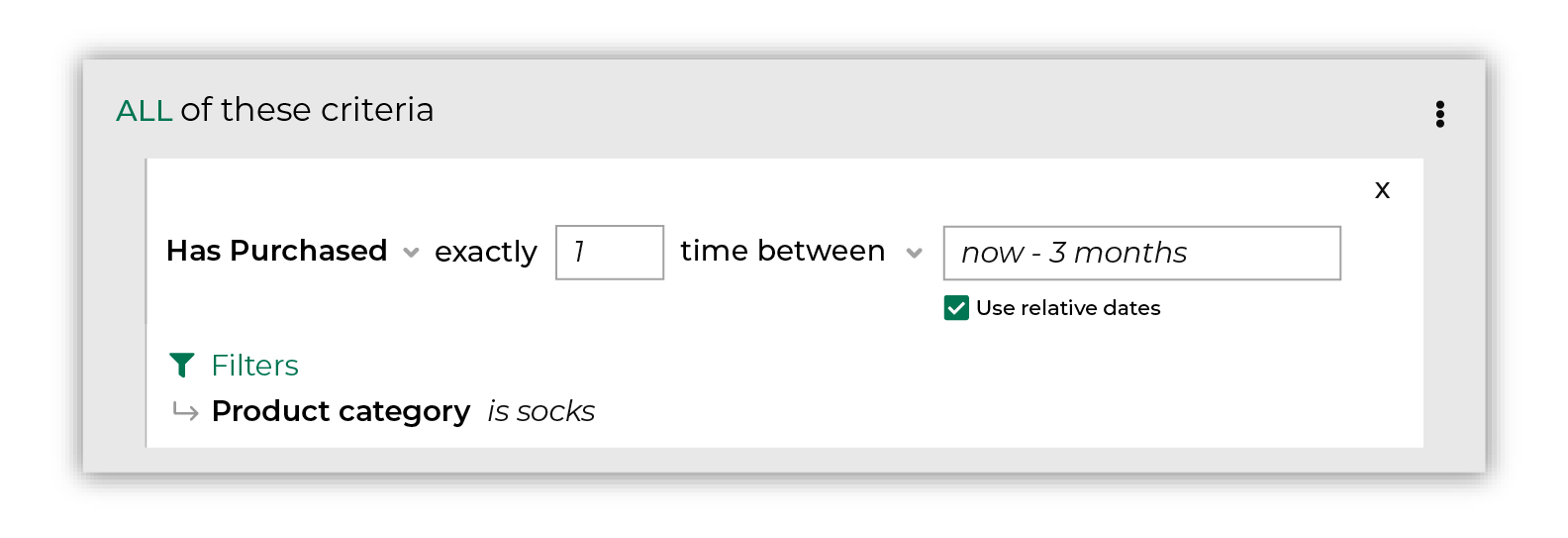
From an integration standpoint, Amperity only supports a limited number of destinations, and there’s not a lot of information regarding performance or reliability. Additionally, the audience feature only works if data is actually configured and modeled in a way that’s usable for your marketing team.
Audience management within Amperity is directly linked to the amount of engineering work your data team has spent setting up your customer databases and tables within the platform. If your data hasn’t been neatly stitched together into a database, your marketers will be forced to write ad-hoc SQL queries instead of using the audience builder to support their campaigns, which is a huge problem.
Composable CDPs don’t have this problem. You don’t need to set up data for any one specific schema, and instead, your marketers can build audiences on that data based on its current form directly in your data warehouse.
Real-time Capabilities
Amperity doesn’t provide a ton of detail around the actual speed of their real-time products, but the company does claim to offer three real-time products:
- Event Routing: This feature works by routing your behavioral events directly to downstream destinations. (Note: Amperity doesn’t provide much information on how this feature actually works, so it’s very possible that the company is relying on MetaRouter for this function or other event tracking tools.)
- Streaming Ingest API: This feature is built on a low-latency, high-throughput REST API that allows you to stream data from your sources directly to Amperity.
- Profile API: This feature allows you to initiate API calls to retrieve specific data points or attributes about your users so you can make them available in your desired destination.
Most CDPs and Composable CDPs offer a similar suite of features. However, if you want to stream directly from tables in your warehouse, this is only supported via Composable CDP solutions like Hightouch.
Reverse ETL
As of 2024, Amperity does not have any Reverse ETL capabilities. You can ingest data from your warehouse to Amperity, but there is no ability to leverage your existing data infrastructure and sync data from your warehouse to downstream destinations.
Given the demand for Reverse ETL and Composable CDPs, this will likely change in the future, but currently, if you have data in your warehouse, the only way to activate your data is to ingest it into Amperity first. Unfortunately, this introduces additional complexity to your architecture and duplicate storage costs.
Security
Amperity is pretty much as secure as any traditional CDP can be and you can set it up to meet regulatory requirements around compliance laws like CCPA, HIPAA, and GDPR. However, this takes quite a substantial amount of work in deployment. The platform also offers a ton of granular controls for user management and access so you can set up permissions, monitor activity, and manage resource usage.
You can also take advantage of sandbox environments to test changes before pushing them live to production to ensure best practices, and you can even roll back changes made in production. Amperity also provides features like SSO and two-factor authentication. However, the most important factor to consider for security is the fact that your data is stored with a third party and not in your own infrastructure, so you’ll always be open to some risk.
Pros and Cons
Amperity has made a name for itself in the identity resolution space, but the company has yet to solidify itself as a true CDP offering that marketers can actually use to drive value. With that in mind, here are a few of the biggest pros and cons of the platform:
Here's the information presented in a markdown table format:
Pros
Strong identity resolution offerings
Non-supported cloud sources can be ingested into Amperity via Fivetran ETL pipelines
Implementation support via solution architects
Cons
Not marketer-friendly
Long implementation time & difficult setup process
Pricing is based on MTUs
Limited number of activation destinations
2024 CDP Landscape Guide
Evaluating CDPs? Download our 2024 CDP Landscape Guide to learn how the top ten enterprise CDPs compare across the following:
- Products & Features
- Core Capabilities
- CDP Type
- Key Differentiator
- Company Direction


Closing Thoughts
If you’re solely looking for an identity resolution platform, Amperity can be a good option. However, if you want to own your data, avoid long implementation times, heavy engineering work, and duplicate storage costs, then a Composable CDP like Hightouch will provide much more flexibility and faster time-to-value for your team–all from within your existing data infrastructure.
If you want to learn more about the difference between Composable CDPs vs. traditional CDPs, book a demo with one of our solution engineers to learn how we can help.










